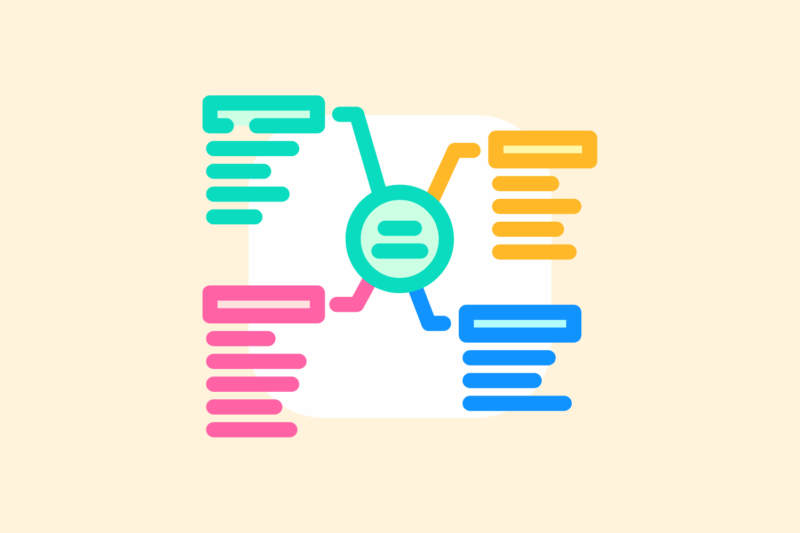Automatic clustering of keywords with AI

Keyword research is the foundation of any SEO strategy. But a list of search terms alone won’t get you there. To get an overview, find gaps and set content goals, you need to cluster keywords. With AI, you automate this process very easily.
Why cluster keywords?
A raw list of hundreds of keywords provides few insights. By grouping search terms around themes, intentions or entities, you discover the structure of your topic and avoid duplicate or overlapping content. Furthermore, you lay the groundwork for content clusters.
Clustering provides organization, strategic focus and content coverage. Automation of content clustering using AI accelerates that process. That brings connections to the surface that often remain hidden in spreadsheets. (1)
How AI groups keywords
AI tools cluster keywords not only based on matching terms, but primarily on semantic relatedness. Models such as ChatGPT or BERT use context and meaning to determine which terms belong together substantively.
Clustering of keywords is typically done using techniques such as natural language processing (NLP), in which algorithms analyze language at the meaning level. Consider recognizing entities, intentions and semantic relationships between words. (2)
In addition, terms are converted into vectors. These are numerical representations that AI uses to calculate the distance and relatedness between words. This creates thematic clusters that not only revolve around exact search terms, but also shared context and meaning. Models such as BERT and OpenAI’s embedding models form the basis for these vectors, which are used to calculate semantic distance.
This creates a format based on how people as well as search engines understand topics. Not only at the word level, but also at the subject level.
Getting started with SEO? Feel free to get in touch.

AI tools and workflows for clustering
There are several ways you deploy AI for keyword clustering. Here are some common workflows:
- Prompt-based clustering in language models
Enter a list of keywords and let AI name and label semantic groups. This method is suitable for smaller sets and content control. - Application of clustering algorithms via Python or Sheets
Combine embedding models (such as OpenAI Embeddings or Cohere) with a clustering algorithm such as K-means or DBSCAN. These tools are suitable for larger data sets. - Use of specialized SEO tools
Tools like Keyword Insights, ClusterAI or Surfer link keyword data to clustering modules based on SERP overlap and intent. Many of these tools provide a cluster classification, but often do not show exactly on the basis of which SERP comparisons or NLP calculations that classification was made.
So you do see overlap rates or linked keywords, but not always the underlying logic.
Which method you choose depends on the number of keywords you work with, your monitoring needs and your technical knowledge. AI is the tool; interpretation remains your job.
Clustering with search intent as a starting point
For a client in e-commerce, I saw a large overlap between informational and transactional search terms, around a product line. Initially, AI clustered these keywords into one group based on semantic relatedness.
After a manual review, we found that users with the search query “How does X work?” had a very different intent than “Buy X. We therefore redistributed the clusters based on search intent. This resulted in two types of keywords: educational keywords and conversion-oriented keywords.
CTR and engagement on both lines increased significantly because the content now better matched the need behind the search query. (3)
Considerations for automatic clustering
AI clustering is powerful, but not flawless. When implementing it, pay attention to correct labeling: AI sees connections but does not automatically understand your content goals. Also pay attention to intent differences within clusters. Informational and transactional terms sometimes seem semantically related, but often different content is needed to describe these terms.
AI has the ability to combine terms that make sense on a linguistic level, but sometimes these keywords are then too broad in content or unusable, for example.
So use AI output as a basis, but always perform a strategic check before writing content.
Summary
AI helps you group keywords faster, smarter and on a larger scale. When you group keywords based on meaning rather than just the relationship between words, the structure better aligns with how people search and how search engines understand information.
The power of this is in the combination: AI helps recognize and structure patterns, you provide interpretation and make strategic choices. This way, the result is not a list of loose terms with little coherence, but a substantive foundation for your SEO structure.
| # | Source | Publication | Retrieved | Source last verified | Source URL |
|---|---|---|---|---|---|
| 1 | How to Do Keyword Clustering & Why It Helps SEO (Semrush Blog) | 12/12/2024 | 12/12/2024 | 10/11/2025 | https://www.semrush.com/.. |
| 2 | How to Apply Semantic SEO to Different Niches (Moz) | 07/10/2022 | 07/10/2022 | 07/11/2025 | https://moz.com/blog/nic.. |
| 3 | Search Intent in SEO: What It Is & How to Optimize for It (SEO Blog By Ahrefs) | 17/10/2024 | 17/10/2024 | 23/11/2025 | https://ahrefs.com/blog/.. |
- Wilkinson, M., Handley, R., Skopec, C., & Fogg, S. (12/12/2024). How to Do Keyword Clustering & Why It Helps SEO. Semrush Blog. Retrieved 12/12/2024, from https://www.semrush.com/blog/keyword-clustering/
- Brain, C. (07/10/2022). How to Apply Semantic SEO to Different Niches. Moz. Retrieved 07/10/2022, from https://moz.com/blog/niche-semantic-seo
- Makosiewicz, M. (17/10/2024). Search Intent in SEO: What It Is & How to Optimize for It. SEO Blog By Ahrefs. Retrieved 17/10/2024, from https://ahrefs.com/blog/search-intent/






